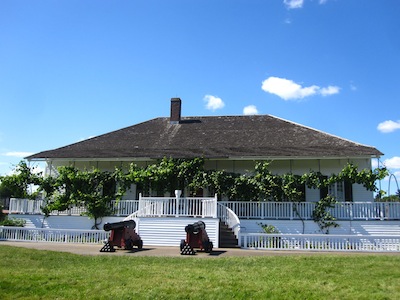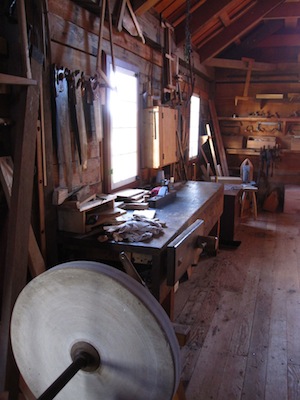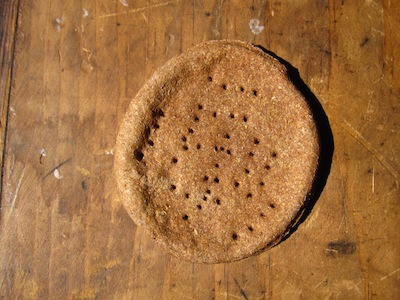By Katy Purviance  Ting! Ting! Ting! It’s hot and dark. Hard to breathe. The enormous fire illuminates the blacksmith’s concentrated, sweating brow. He hammers a red-hot piece of iron into a new pot hook for the kitchen. The other blacksmith tugs at a lever to operate the billows -- which is about the size of a refrigerator, if there had been such things as refrigerators -- and the fire roars.
Ting! Ting! Ting! It’s hot and dark. Hard to breathe. The enormous fire illuminates the blacksmith’s concentrated, sweating brow. He hammers a red-hot piece of iron into a new pot hook for the kitchen. The other blacksmith tugs at a lever to operate the billows -- which is about the size of a refrigerator, if there had been such things as refrigerators -- and the fire roars.
It’s 1832. This is “the New York of the Pacific” at the end of the Oregon Trail in Oregon Territory, the New World headquarters of the British Hudson’s Bay Company. This little piece of civilization in this vast wilderness is how the ladies in London get their furs. This melting pot -- home and employer of Brits, Hawaiians, and French Canadians as well as members of several indigenous tribes -- will become home to the U.S. Army when they take over in 1860. They will give it a new name: Fort Vancouver. Outside the stockade, it’s 2013. This is now Washington State. Oregon became its own state, just across the nearby Columbia River. And the original Vancouverites, upset at the new U.S. border and all that it entailed, packed up and headed north to start a new Vancouver.
Outside the stockade, it’s 2013. This is now Washington State. Oregon became its own state, just across the nearby Columbia River. And the original Vancouverites, upset at the new U.S. border and all that it entailed, packed up and headed north to start a new Vancouver.
Right now, however, it’s fun to pretend that we are back in the days before traffic and texting. The early 19th century comes alive before your very eyes thanks to a troupe of well-versed volunteers. Complete in period clothing, they are happy to converse with you about their lives here. It seems so real.
Keeping the books on a storehouse full of furs -- the currency of the day -- is a gentleman who explains that the local natives didn’t know how to hunt. They were fishermen. So how to get the furs the London ladies wanted? Simple. The Hudson’s Bay Company hired hunters from a tribe further north to come give lessons.
Step into the Trading House and you’ll see the beads and trinkets from London that the Hudson’s Bay Company used to pay for the furs. Make a joke about buying an iPod, and the trader, staying in character, will act like he has no idea what you’re talking about.Tool around in the Woodshop. Double-check the books at the Counting House. Go to Jail. See what’s in all those little glass bottles in the Infirmary.
On special occasions, you can even make your own sea biscuits in the Bakery.
Meanwhile, in the small, dark Kitchen, you’ll marvel at how many meals were prepared without any of your modern conveniences. Servants carried each meal up a narrow set of stairs to the well-appointed dining room above.
For a more respectable entrance, go around and ascend the double stair of the white clapboard Master’s House and see how Chief Factor John McLoughlin lived. During special events, you can eavesdrop on the family’s period conversation, in period costume and with period hairstyles, as they eat their supper by candlelight. You’ll feel like a foreign exchange student who is studying abroad in The Past. Before you leave the early 19th century, head over to the turret at the northwest corner of the Fort. It’s not always open, but if it is, you can take the stairs to the second level and peer out in every direction at the brave new world beyond. Your world.
Before you leave the early 19th century, head over to the turret at the northwest corner of the Fort. It’s not always open, but if it is, you can take the stairs to the second level and peer out in every direction at the brave new world beyond. Your world.
Fort Vancouver is open 360 days a year. Admission is $3. Parking is free. The Fort is located on East 5th Street between Fort Vancouver Way and Reserve Street in Vancouver, WA 98661. (360) 816-6200. http://nps.gov/fova
If you would like to purchase this article for your publication, please click here to contact the author directly.